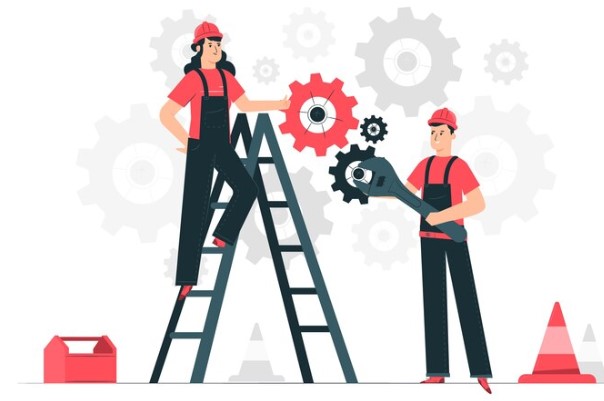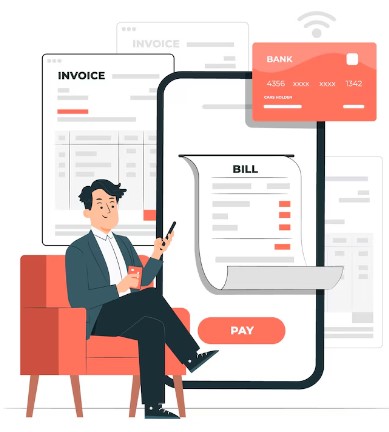
CAFM | iWMS solutions
At ABS, we are dedicated to helping organizations optimize their facility management processes and maximize the value of their built environment through our comprehensive CAFM solutions.
Whether you’re looking to streamline operations, improve productivity, or enhance asset performance, we have the expertise, experience, and resources to help you achieve your facility management goals. Partner with us today and let’s transform your facilities into a strategic asset for your organization’s success.
Some Core services

Training and Support
We believe that ongoing training and support are essential for the successful adoption and utilization of CAFM solutions. That’s why we offer comprehensive training programs and continuous support services to help our clients maximize the value of their investment, empower their staff with the necessary skills and knowledge, and address any challenges or questions that may arise.
Software Implementation
Our experienced team specializes in implementing CAFM software tailored to the unique requirements and objectives of each client. From initial planning and configuration to data migration and training, we ensure a seamless transition to the new CAFM platform, enabling organizations to optimize facility management processes and improve operational efficiency.
Upgrade and Optimization
As technology evolves and business needs change, we provide upgrade and optimization services to ensure that our clients’ CAFM systems remain up-to-date, secure, and aligned with industry best practices. Whether it’s implementing new features, improving system performance, or enhancing scalability, we are committed to helping our clients stay ahead of the curve.
Customization and Integration
We understand that every organization has unique needs and workflows, which is why we offer customization and integration services to tailor our CAFM solutions to fit seamlessly into existing processes and systems. Whether you need custom features, modules, or integrations with third-party applications, our experts have the skills and experience to make it happen.
modules offered

building operations
- Preventive Maintenance
- Corrective Maintenance
- Condition Assessment

Asset Management
- Asset Management
- Furniture Management
- Equipment Management

Space Management
- Strategic Space Planning
- Space Inventory
- Personnel & Occupancy
- Space Chargeback
- Move Management

Real Estate Management
- Portfolio Management
- Lease Administration
- Cost Administration
- Cost Chargeback & Invoicing
- Strategic Financial Analysis

Environment & Risk Management
- Energy Management
- Green Building
- Waste Management
- Emergency Preparedness
- Compliance Management
- Envt. Health & Safety

Capital Project Management
- Capital Budgeting
- Project Management
- Condition Assessment
- Commissioning
-
Asset
Management -
Preventive
Maintenance -
Asset Lifecycle
Management
asset management
Asset management involves the systematic process of developing, operating, maintaining, and upgrading assets in a cost-effective manner. It is used in various industries, such as finance, real estate, manufacturing, and utilities, to manage physical or financial resources.
Here are key elements of asset management:
– Inventory and Classification: Creating a detailed inventory of assets, categorizing them by type, value, age, and other characteristics.
– Performance Monitoring: Regularly assessing asset performance to ensure they meet operational and financial goals.
– Risk Management: Identifying risks associated with assets, including depreciation, obsolescence, or failure, and mitigating these risks.
– Lifecycle Management: Managing an asset from acquisition through its operational life to eventual decommissioning, ensuring maximum return on investment (ROI).
– Maintenance and Repairs: Ensuring assets are maintained and repaired as needed to prolong their useful life and avoid unexpected downtime or failure.
– Regulatory Compliance: Adhering to legal and regulatory requirements concerning the ownership, operation, and maintenance of assets.
– Financial Management: Tracking the costs associated with acquiring, operating, and disposing of assets, aiming for optimal cost efficiency.
Preventive maintenance
Preventive maintenance refers to the proactive approach of performing regular maintenance activities on equipment and assets to prevent unexpected breakdowns or failures. Unlike corrective maintenance, which happens after an issue arises, preventive maintenance is scheduled based on time, usage, or condition to ensure equipment continues to operate efficiently and without interruption.
Key Aspects of Preventive Maintenance:
Scheduled Inspections: Regularly scheduled inspections help identify potential issues before they become serious problems. These inspections are based on time intervals (e.g., monthly, quarterly) or usage (e.g., after a certain number of operational hours).
Equipment Cleaning and Lubrication: Preventive maintenance often includes cleaning, lubrication, and minor adjustments to keep machinery and equipment functioning smoothly.
Replacement of Worn Parts: Components with a known lifespan, such as filters, belts, or gaskets, are replaced before they fail. This prevents sudden breakdowns and prolongs the overall life of the equipment.
Calibration and Testing: Calibrating equipment and systems ensures they continue to function accurately and safely. This is especially important in industries where precision is critical, such as manufacturing, healthcare, and aviation.
Documentation and Record-Keeping: Maintaining detailed records of preventive maintenance activities helps track the history of each asset, providing insights into its performance and identifying trends or recurring issues.
Condition-Based Maintenance (CBM): This strategy relies on monitoring the actual condition of the equipment through sensors or diagnostic tools to trigger maintenance actions only when specific indicators signal a decline in performance. CBM helps reduce unnecessary maintenance while preventing failures.
Asset Lifecycle Management (ALM)
Here’s how CAFM enhances Asset Lifecycle Management (ALM):
1. Asset Tracking & Inventory Management
2. Acquisition & Procurement
3. Preventive and Corrective Maintenance
4. Work Order Management
5. Budgeting & Cost Management
6. Asset Performance & Condition Monitoring
7. Compliance & Safety
8. Asset Depreciation & Disposal
9. Data Analytics and Reporting
LINK for details


the CAFM difference
Computer-Aided Facility Management (CAFM) systems play a critical role in streamlining facility management tasks by integrating technology with daily operational processes. Here’s the CAFM difference:

Related services
Software Solutions and Resources
Enhance your understanding of our software with valuable resources.
Software Downloads for Your Business
Gain in-depth knowledge about our software solutions and optimize your business processes.
Software Development Articles
Stay ahead with our expert insights on software trends and tips.

